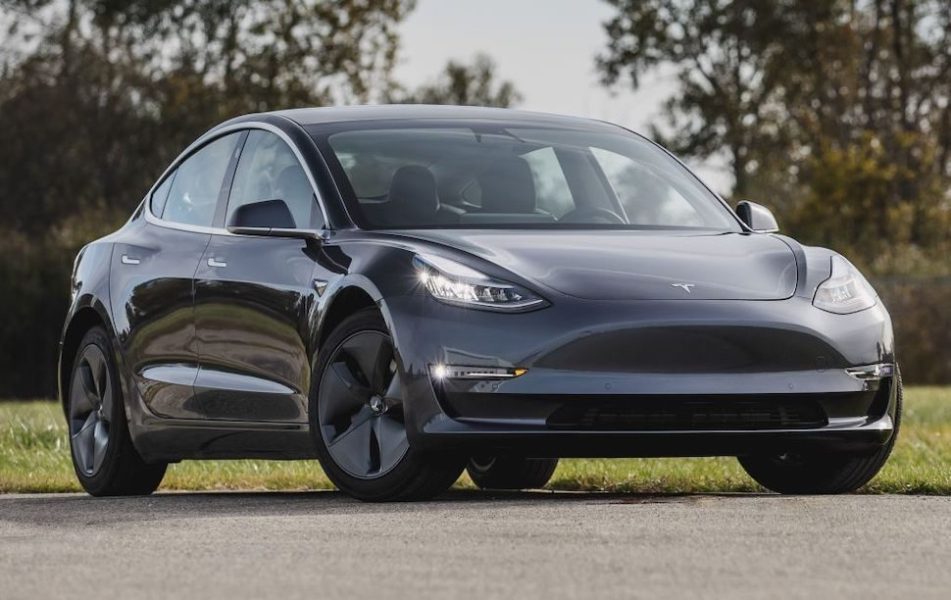
Electric vehicle road tax
Content

The low fixed cost of an electric vehicle is a mitigating factor for often sky-high purchase prices. This is helped by the road tax, which is exactly zero euros per month for an electric car. But will the tax on electric vehicles always be zero or will it increase in the future?
It is a significant source of revenue for the government of the country and provinces: the motor vehicle tax (MRB). Or, as it is also called, road tax. In 2019, the Dutch paid about 5,9 billion euros in road tax, according to CBS. And how much of that came from plugins? Not a single euro cent.
Until 2024, the road tax discount for an electric car is XNUMX%. Or, to put it more comprehensibly: EV owners no longer pay MRBs nor euros. The government wants to use this to encourage electric driving. After all, buying an electric car is quite expensive. If monthly costs then fall, buying an electric car could become financially attractive, at least the idea is.
BPM
This tax plan describes more of the financial benefits of electric vehicles. Take BPM, which is also zero for EVs. BPM is calculated based on the vehicle's CO2 emissions. Therefore, it is not surprising that this purchase tax is zero. Amazingly, this BPM will increase to € 2025 from 360. A reduced mark-up rate of 8 percent to the € 45.000 list price is also part of this plan.
EVs are not unique in this regard: there are also financial incentives for plug-in hybrids to upgrade to a "cleaner" version. There is a road tax discount for plugins (PHEV). PHEV intention free, 2024 percent discount (up to age 50). This fifty percent is based on the rate for a “normal” passenger car. In other words, if you are driving a gasoline PHEV, your road tax will be half what a gasoline vehicle would be in that weight class.
The problem with financial incentives is that they can also be too popular. Take, for example, the tax authorities, where too many employees have taken advantage of severance pay and the problems in the State Department have only worsened. If everyone starts using electric cars and MRB's revenue falls from nearly six billion euros a year to zero, the government and all provinces will be in serious trouble.
Road tax on electric vehicles increased
Thus, the vehicle tax rebate will decrease from 2025. In 2025, electric car drivers will pay a quarter of the road tax, in 2026 they will pay the entire tax. It just gets a little unclear here. The Tax and Customs Administration writes about the discount on "regular cars". But ... what are normal cars? Inquiries to the tax authorities show that we are talking about gasoline cars.

And this is amazing. After all, electric vehicles are relatively heavy because batteries are so heavy. For example, Tesla Model 3 weighs 1831 kg. A petrol car with this weight costs 270 euros per quarter in MRB terms in North Holland. This means that a Tesla Model 3 in 2026 will cost ninety euros a month in this province, if those numbers do not rise. Which they will almost certainly do.
For comparison: BMW 320i weighs 1535 kg and costs 68 euros per month in North Holland. From 2026, in most cases, from a road tax point of view, it will be more profitable to choose a car with a gasoline engine instead of an electric car. This is somehow a little noticeable. For example, a diesel car is now more expensive in terms of MRB, as are LPG and other fuels. Thus, in the past, the government has tried to influence people in terms of the environment with different MRB ratios, but in the case of electric vehicles, it prefers not to.
It seems a little counterintuitive. Whoever decides to buy an electric car and thus emits less emissions into the world than one who has a gasoline car should be rewarded for it, right? After all, people with older diesels are punished with a soot tax, so why aren't electric cars rewarded? On the other hand, there are still several years left until 2026 (and at least two elections). So a lot can change during this time. Another additional MRB category for electric vehicles, for example.
Road tax on PHEV
When it comes to road tax, hybrid cars have the same future prospects as an all-electric car. Until 2024, you pay half of the “regular” road tax. On PHEVs it is easier to indicate "normal" road tax than on electric vehicles: plugins always have an internal combustion engine on board. This way, you will also find out what the normal road tax is charged to this car.
Example: Someone bought a Volkswagen Golf GTE in North Holland. It is a PHEV with a petrol engine and weighs 1.500 kg. The province is relevant here because of the provincial allowances that differ from province to province. These provincial surcharges are part of the road tax that goes directly to the province.

Since you know a PHEV costs half the "normal" option, you should look at the car's MRB. petrol car which weighs 1.500 kg. In North Holland, such a car pays 204 euros per quarter. Half of that amount is again € 102 and therefore the MRB amount for the Golf GTE in North Holland.
The government is also going to change that. In 2025, the road tax on PHEVs will increase from 50% to 75% of the "regular rate". According to current data, such a Golf GTE costs 153 euros per quarter. A year later, the MRB discount even disappeared completely. Then, as a PHEV owner, you pay just like anyone else for an environmentally polluting gasoline vehicle.
Review of popular plugins
To make the differences even clearer, let's take a few more popular PHEVs. The most popular plug-in is perhaps the Mitsubishi Outlander. When business drivers could still drive SUVs with a 2013% addition at 0, Mitsubishi couldn't be dragged down. For Mitsu that didn't ship overseas, here are the MRB figures.

This Outlander, which Wouter drove in late 2013, weighs 1785kg unladen. The Northern Dutchman now pays €135 per quarter. In 2025 it will be 202,50 euros, a year later - 270 euros. So the Outlander is already more expensive on the MRB than the Golf GTE, but in six years the difference will be even bigger.
Another rental winner is the Volvo V60 D6 plug-in hybrid. Wouter also tested this one, two years earlier than Mitsubishi. Interesting in this car is the internal combustion engine. Unlike the other hybrids featured in this article, this is a diesel engine.
heavy diesel
It is also a heavy diesel. The curb weight of the vehicle is 1848 kg, which means net falls into the same weight class as the Outlander. However, here we see the difference between petrol and diesel: North Hollander now pays €255 quarterly in MRB terms. In 2025, this amount increased to 383 euros, a year later - at least 511 euros. More than double the previous Golf GTE, so.
The last thing we'll talk about is the Audi A3 e-tron. We now know the e-tron label from an electric SUV, but in the days of this Sportback, they still meant PHEV. Apparently, Wouter is already getting a little tired of the PHEV because Kasper was allowed to test drive the hybrid.
This PHEV has "just" a petrol engine and weighs a little more than a Golf GTE. Audi weighs 1515 kg. This logically gives us the same numbers as the Golf. So now the Northern Dutchman pays 102 euros per quarter. In the middle of this decade it will be 153 euros, and in 2026 it will be 204 euros.
Conclusion
The bottom line is that EVs (and plugins) are now financially attractive to buy privately. After all, an electric car isn't worth a cent in terms of road tax. This will only change: from 2026 this special provision for electric vehicles will completely disappear. Then an electric car will cost the same as a regular gasoline car. In fact, since the electric car is often heavier, the road tax rises. More cost than the gasoline option. This also applies, albeit to a lesser extent, to the plug-in hybrid.
As mentioned, the government can still change this. Consequently, this warning may become irrelevant after five years. But this should be kept in mind if you are looking to buy an electric vehicle or PHEV for the long term.

